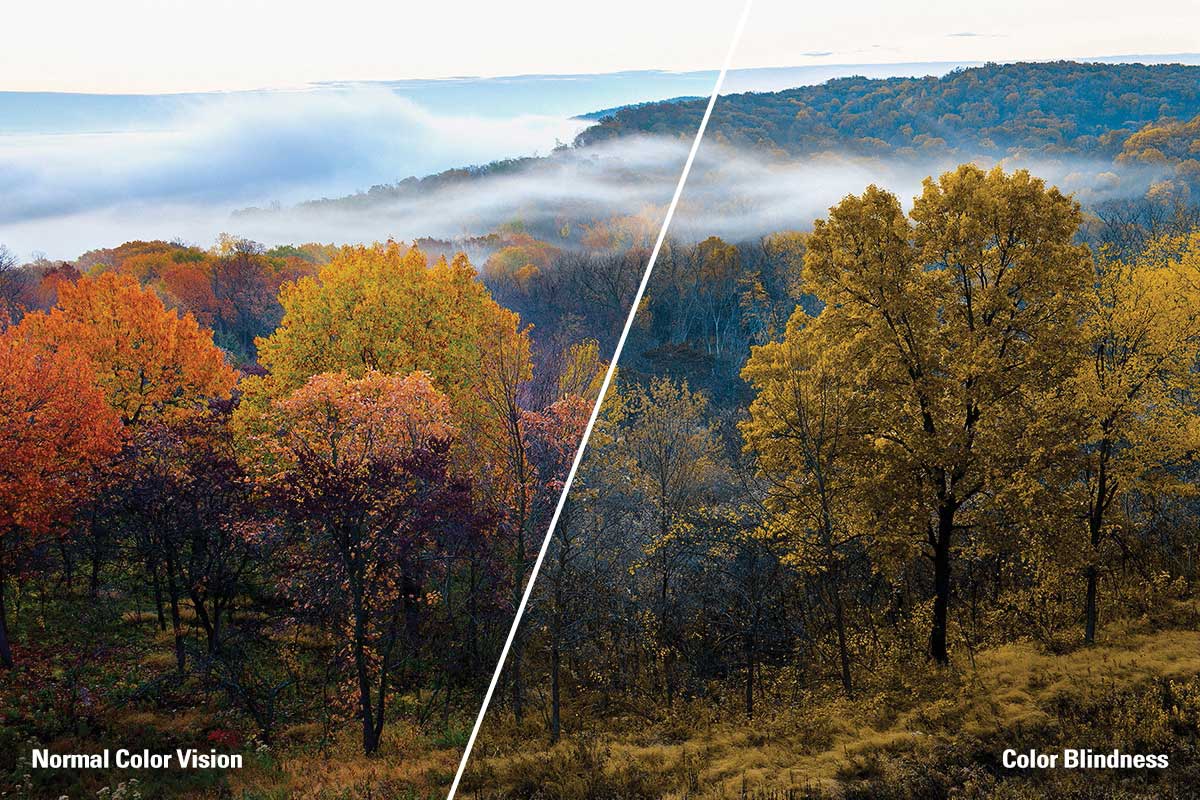
By Jenny Nguyen-Wheatley
Although most people who are color blind can see color, they have trouble accurately distinguishing between different shades. Color vision deficiency can drastically diminish the vibrancy and range of colors that exist in the outdoors. A study conducted by EnChroma, creators of glasses for color blindness, found that three-fourths of 505 respondents felt “left out” or disappointed in trips to parks, gardens and art museums because they couldn’t fully experience the colors. Furthermore, roughly three out of four participants found it challenging to understand maps, brochures, signs and exhibits that convey information through colors.
Nebraska Game and Parks Fisheries Biologist Keith Hurley described his color blindness as “moderate.” He has trouble distinguishing between the colors red, green, brown, blue and purple — colors often found in nature.
In college, ornithology was a particularly difficult subject for Hurley, because bird identification hinges on a person’s ability to detect colors quickly as a bird flies past.
“Someone might say, ‘Look at the red on that green bird.’ And I’m like what red?” Hurley said. “Or they’ll say, ‘Look at that bright green.’ I’m looking at and it doesn’t look bright green to me.”
As an archery hunter, Hurley has difficulty differentiating deer among the browns of fall vegetation. However, when he is successful in connecting with an animal, blood trailing becomes the bigger challenge. Red and green colors are the most difficult colors for Hurley to separate, so trying to find specks of red blood on the greens and browns of oak leaves and grass can be frustrating.
“I need to have some form of an aid to get me through the blood tracking part because I can be crawling on my hands and knees and not see blood that my son can see standing 5 feet away,” Hurley said.
Hurley has to be mindful of his archery equipment. His setup allows for fast-expiring animals and the largest blood trail possible because he doesn’t have the ability to follow long, difficult trails. Whenever possible, he has friends or family members help him track deer. He has also leaned on the help of dogs that can follow scent.
Hurley advises colorblind hunters to plan ahead. Depending on the type of color blindness, there are flashlights that can help differentiate blood trails. Another trick is to use hydrogen peroxide to make blood foam, making it more visible.
Lately, Hurley has been reaching for his EnChroma glasses, a new technology that is helping people with red-green color blindness — the most common type of color blindness — see the world. These glasses stimulate the brain’s color processing center to enhance color vision for most people with this condition. Hurley uses the glasses whenever he is outside, whether hunting, fishing or simply enjoying nature.
“The first time I put these glasses on and the first time I’ve watched others use them — they literally bring tears to your eyes. It’s an emotional experience that you didn’t even know was possible because you never knew it existed,” Hurley said. “One of the things about nature is just the splendor — the visual splendor that nature has. And until I had these glasses, I never truly understood what that meant.”
However, EnChroma glasses are expensive. Recognizing that people with color blindness may struggle to fully enjoy activities like hiking, fishing, birdwatching and hunting, the Parks in Full Color Campaign is looking for donations to make these glasses available to visitors. The goal is to provide EnChroma color-blindness glasses kits at locations such as Wildcat Hills Nature Center, Schramm Education Center and Ponca State Park, with plans to expand.
To make a charitable donation, visit the “Parks in Full Color Campaign.” Your support can make a lasting impact on someone’s outdoor experience.
